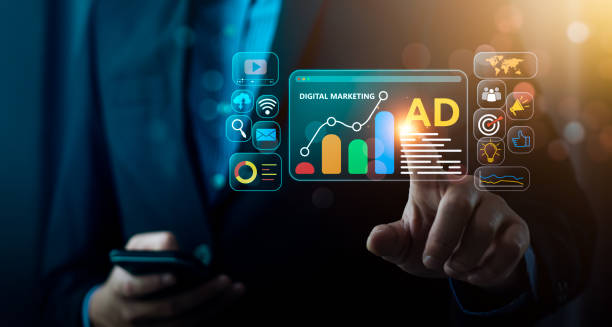Unlocking the Power of SEO and Digital PR for Enhanced Brand Visibility
Amplify Your Brand Visibility with the Power of SEO and Digital PR
In today's digital landscape, establishing a strong online presence is crucial for businesses to thrive. With so much competition in every industry, it's essential to implement effective strategies that can help increase your brand's visibility and reach your target audience.
This is where the powerful combination of search engine optimization (SEO) and digital public relations (digital PR) comes into play. By integrating these two complementary approaches, you can amplify your brand's visibility, boost brand awareness, and ultimately drive more traffic and engagement to your website or digital platforms.
This article will explore the synergistic relationship between SEO and digital PR, and how leveraging their combined strengths can help you achieve maximum brand visibility in the digital world.
Whether you're a small business owner, a marketing professional, or an entrepreneur, this comprehensive guide will provide valuable insights and actionable tips to help you increase your online presence and outshine your competitors.

Understand the Fundamentals of SEO and Digital PR
- What is SEO, and Why Is It Crucial for Brand Visibility?
- Demystifying Digital PR: How It Enhances Online Reputation and Visibility
- The Importance of Combining SEO and Digital PR for Maximum Impact
Crafting a Winning Digital PR Strategy
- Aligning Your Digital PR Efforts with Your Brand's Goals and Target Audience
- Identifying Relevant Media Outlets and Influencers for Your Digital PR Campaigns
- Creating Compelling and Newsworthy PR Content to Capture Attention
Integrating SEO into Your Digital PR Efforts
- Optimizing Your PR Content for Search Engines
- Leveraging Digital PR to Build High-Quality Backlinks
- Using Digital PR to Amplify Your Brand Message and Increase Online Visibility
Measuring Success: Key Metrics to Track
- Monitoring Search Engine Rankings and Organic Traffic
- Analyzing Media Coverage and Mentions
- Evaluating Brand Awareness and Engagement Levels
Advanced Tactics for Boosting Brand Visibility
- Local SEO: Enhancing Your Brand's Visibility in Specific Geographic Areas
- Leveraging Social Media for Increased Brand Exposure
- Repurposing and Amplifying Successful Digital PR Campaigns
Real-World Examples and Case Studies
- How Successful Brands Have Utilized SEO and Digital PR to Boost Visibility
- Lessons Learned from Effective Digital PR and SEO Campaigns
- Overcoming Common Challenges in Combining SEO and Digital PR Efforts
The Future of SEO, Digital PR, and Brand Visibility
- Emerging Trends and Technologies Shaping the Digital Marketing Landscape
- The Role of Artificial Intelligence and Automation in SEO and Digital PR
- Staying Ahead of the Curve: Adapting to Changes in Search Algorithms and Consumer Behavior
Building a Cohesive SEO and Digital PR Team
- Fostering Collaboration Between SEO and PR Professionals
- Sharing Insights and Aligning Strategies for Optimal Results
- Leveraging the Strengths of Each Discipline for Maximum Brand Visibility
Frequently Asked Questions About SEO, Digital PR, and Brand Visibility
- How Long Does It Take to See Results from SEO and Digital PR Efforts?
- What Are the Best Practices for Developing Engaging PR Content?
- How Can I Measure the ROI of My SEO and Digital PR Campaigns?
Conclusion: Embrace the Power of SEO and Digital PR
- Recap of the Benefits of Combining SEO and Digital PR
- Final Tips for Achieving Maximum Brand Visibility
- Call to Action: Start Implementing an Integrated SEO and Digital PR Strategy Today
In the first section, we'll delve into the fundamentals of SEO and digital PR, exploring their definitions, importance, and the benefits of combining these two powerful strategies. We'll discuss how SEO helps improve your website's visibility and search engine ranking, while digital PR focuses on building your brand's reputation and increasing its online presence through media coverage and influencer outreach.
Next, we'll dive into crafting a winning digital PR strategy that aligns with your brand's goals and target audience. We'll cover identifying relevant media outlets and influencers, as well as creating compelling and newsworthy PR content that captures attention.
The third section will focus on integrating SEO into your digital PR efforts. We'll explore techniques such as optimizing your PR content for search engines, leveraging digital PR to build high-quality backlinks, and using digital PR to amplify your brand message and increase online visibility.
In the fourth section, we'll discuss how to measure the success of your SEO and digital PR campaigns by tracking key metrics such as search engine rankings, organic traffic, media coverage, brand awareness, and engagement levels.
The fifth section will cover advanced tactics for boosting brand visibility, including local SEO, leveraging social media, and repurposing and amplifying successful digital PR campaigns.
To illustrate the power of combining SEO and digital PR, we'll provide real-world examples and case studies of successful brands that have utilized these strategies to boost their visibility and outshine their competitors. We'll also discuss lessons learned from effective campaigns and how to overcome common challenges.
Looking ahead, we'll explore the future of SEO, digital PR, and brand visibility, including emerging trends and technologies, the role of artificial intelligence and automation, and adapting to changes in search algorithms and consumer behavior.
Building a cohesive SEO and digital PR team is crucial for success, so we'll provide insights on fostering collaboration between professionals from both disciplines, sharing insights, and aligning strategies for optimal results.
To address common questions and concerns, we'll include a frequently asked questions section covering topics such as the expected time frame for seeing results, best practices for developing engaging PR content, and measuring the return on investment (ROI) of SEO and digital PR campaigns.
Finally, we'll conclude by recapping the benefits of combining SEO and digital PR, offering final tips for achieving maximum brand visibility, and issuing a call to action for readers to start implementing an integrated SEO and digital PR strategy today.
Key Takeaways:
- Combining SEO and digital PR is a powerful strategy for boosting brand visibility, awareness, and online presence.
- SEO helps improve your website's visibility and search engine ranking, while digital PR focuses on building your brand's reputation and increasing its online presence.
- Craft a winning digital PR strategy that aligns with your brand's goals and target audience, and optimize your PR content for search engines.
- Leverage digital PR to build high-quality backlinks, amplify your brand message, and increase online visibility.
- Measure success by tracking key metrics such as search engine rankings, organic traffic, media coverage, brand awareness, and engagement levels.
- Implement advanced tactics like local SEO, social media amplification, and repurposing successful PR campaigns.
- Foster collaboration between SEO and PR professionals, share insights, and align strategies for optimal results.
- Stay ahead of emerging trends, technologies, and changes in search algorithms and consumer behavior.
- Start implementing an integrated SEO and digital PR strategy today to achieve maximum brand visibility in the digital world.
Understand the Fundamentals of SEO and Digital PR
What is SEO, and Why Is It Crucial for Brand Visibility?
Search engine optimization (SEO) is the practice of optimizing websites and online content to rank higher in search engine results pages (SERPs) for relevant keywords and phrases. In today's digital age, having a strong online presence is essential for businesses to be visible and accessible to their target audience. With billions of searches conducted daily on search engines like Google, optimizing your website and content for search is crucial for increasing your brand's visibility.
Effective SEO involves a multifaceted approach that includes technical website optimizations, high-quality content creation, strategic keyword targeting, and building a robust backlink profile. By implementing SEO best practices, you can improve your website's visibility in search results, making it easier for potential customers to find your brand when searching for products, services, or information related to your industry.
Moreover, SEO plays a significant role in driving organic traffic to your website. When your website ranks higher in search results for relevant keywords, you're more likely to attract targeted visitors who are actively searching for what you offer. This increased visibility and organic traffic can lead to higher engagement, more conversions, and ultimately, improved brand awareness and growth.

Demystifying Digital PR: How It Enhances Online Reputation and Visibility
Digital public relations (digital PR) is the practice of leveraging online channels and platforms to build and manage a brand's reputation, increase visibility, and foster meaningful connections with target audiences. In the digital age, where news and information spread rapidly across various online platforms, digital PR has become an essential component of any effective marketing strategy.
Digital PR encompasses a wide range of tactics, including online press releases, influencer outreach, content marketing, social media campaigns, and online reputation management. By creating compelling and newsworthy content, establishing relationships with influential online personalities, and actively engaging with audiences across various digital channels, digital PR professionals can effectively increase a brand's online visibility and shape its reputation.
Effective digital PR campaigns can result in valuable media coverage, high-quality backlinks, increased social media mentions, and amplified brand messaging. These outcomes not only enhance a brand's online reputation but also contribute to improved search engine visibility, as search algorithms factor in online mentions, backlinks, and social signals when ranking websites.
The Importance of Combining SEO and Digital PR for Maximum Impact
While SEO and digital PR are distinct disciplines, they are inherently interconnected and can significantly benefit from being combined into a cohesive strategy. By integrating these two approaches, businesses can amplify their brand's visibility, reputation, and online presence, ultimately driving maximum impact.
SEO focuses on optimizing websites and content for search engines, while digital PR concentrates on building brand reputation and visibility through online channels. When these efforts are aligned and executed in tandem, they can create a powerful synergy that reinforces each other's strengths.
For instance, successful digital PR campaigns can generate high-quality backlinks and online mentions, which are key ranking factors for search engines. Conversely, well-optimized website content and a strong SEO foundation can improve the visibility and discoverability of digital PR efforts, ensuring that positive brand messaging and media coverage reach a wider audience.
Furthermore, by combining SEO and digital PR, businesses can leverage data-driven insights from both disciplines to inform their overall strategy. SEO data can provide valuable information about audience interests, search behavior, and content performance, while digital PR insights can reveal influencer networks, industry trends, and potential opportunities for targeted outreach and content creation.
In summary, understanding the fundamentals of SEO and digital PR is crucial for businesses seeking to maximize their online visibility, reputation, and brand awareness. By leveraging the strengths of both disciplines and combining them into a cohesive strategy, businesses can achieve a powerful synergy that drives maximum impact in the digital landscape.

Crafting a Winning Digital PR Strategy
Aligning Your Digital PR Efforts with Your Brand's Goals and Target Audience
Before embarking on any digital PR campaign, it's crucial to align your efforts with your brand's overarching goals and target audience. A well-crafted digital PR strategy should be tailored to support your business objectives, whether it's increasing brand awareness, driving website traffic, generating leads, or enhancing brand reputation.
Start by clearly defining your brand's goals and desired outcomes from your digital PR efforts. Are you launching a new product or service and need to generate buzz? Are you aiming to establish your brand as a thought leader in your industry? Or are you looking to repair or enhance your online reputation? Understanding your objectives will help you develop a focused and effective digital PR strategy.
Next, identify and thoroughly understand your target audience. Who are the people you want to reach with your digital PR campaigns? What are their interests, pain points, and online behaviors? By gaining insights into your target audience's preferences and consumption habits, you can tailor your messaging, content, and outreach efforts to resonate with them more effectively.
Additionally, consider your brand's unique value proposition and positioning in the market. Your digital PR strategy should consistently reinforce your brand's identity, values, and key differentiators, ensuring a cohesive and authentic messaging across all channels and touchpoints.
Identifying Relevant Media Outlets and Influencers for Your Digital PR Campaigns
Identifying the right media outlets and influencers is crucial for the success of your digital PR campaigns. These are the channels and individuals that can amplify your brand's message, increase visibility, and lend credibility to your efforts.
Begin by researching and compiling a list of relevant media outlets, blogs, and online publications that cater to your target audience or cover topics related to your industry. These could include industry-specific trade publications, popular consumer magazines, or niche blogs with a dedicated following. Evaluate their reach, authority, and influence within your target market.
Additionally, identify key influencers who have a strong presence and credibility in your industry or niche. These could be industry experts, thought leaders, bloggers, or social media personalities with a significant following and engagement. Influencers can help amplify your brand's message, lend credibility to your campaigns, and introduce your brand to new audiences.
When evaluating media outlets and influencers, consider factors such as their audience demographics, content quality, engagement levels, and overall reputation. Look for outlets and influencers that align with your brand's values and messaging, and have a track record of producing high-quality, relevant content.

Creating Compelling and Newsworthy PR Content to Capture Attention
At the heart of any successful digital PR campaign lies compelling and newsworthy content. This content serves as the foundation for your outreach efforts, media pitches, and overall messaging. Creating attention-grabbing content is essential for cutting through the noise and capturing the interest of media outlets, influencers, and your target audience.
Start by identifying newsworthy angles or stories that are relevant to your brand, industry, or target audience. This could include new product launches, industry trends or insights, customer success stories, or unique perspectives on current events or hot topics. Look for stories that offer value, entertainment, or education to your audience.
When crafting your PR content, focus on telling a compelling narrative that resonates with your audience. Use storytelling techniques, engaging writing styles, and multimedia elements (such as images, videos, or infographics) to make your content more captivating and shareable.
Additionally, ensure that your PR content is well-researched, factual, and accurately represents your brand's messaging and values. Incorporate quotes, statistics, or expert insights to lend credibility and authority to your content.
Remember, the ultimate goal of your PR content is to pique the interest of media outlets, influencers, and your target audience. By creating compelling and newsworthy content, you increase the chances of your message being picked up, shared, and amplified across various digital channels.
Integrating SEO into Your Digital PR Efforts
While digital PR and SEO are distinct disciplines, they can work together synergistically to amplify your brand's online visibility and impact.
By integrating SEO into your digital PR efforts, you can maximize the reach and effectiveness of your campaigns, driving more qualified traffic to your website and improving your search engine rankings.
Optimizing Your PR Content for Search Engines
One of the most effective ways to integrate SEO into your digital PR strategy is by optimizing your PR content for search engines. This involves incorporating relevant keywords and phrases into your press releases, articles, and other PR materials, making it easier for search engines to understand and index your content.
Start by conducting thorough keyword research to identify the most relevant and high-value keywords and phrases related to your brand, products, services, and target audience. Use these keywords strategically throughout your PR content, including in the headline, subheadings, body copy, and metadata (such as title tags and meta descriptions).
Additionally, ensure that your PR content is structured in a way that is easily crawlable and readable by search engines. Use descriptive URLs, include alt text for images, and leverage appropriate heading tags (H1, H2, H3, etc.) to help search engines better understand the hierarchy and context of your content.
By optimizing your PR content for search engines, you increase the chances of it ranking well in relevant search results, driving more qualified traffic to your website and potentially boosting your overall search engine visibility.

Leveraging Digital PR to Build High-Quality Backlinks
Backlinks, or links from other websites pointing to your own, are a crucial ranking factor for search engines. The more high-quality backlinks you have, the more authoritative and trustworthy your website appears to search engines, which can positively impact your search rankings.
Digital PR campaigns present an excellent opportunity to build high-quality backlinks from reputable and relevant sources. When your PR content is published or featured on authoritative media outlets, blogs, or industry publications, you can often secure valuable backlinks to your website.
To maximize the backlink potential of your digital PR efforts, ensure that your PR content includes relevant internal links to your website or specific pages you want to promote. Additionally, establish relationships with journalists, bloggers, and influencers in your industry, as they may be more receptive to linking back to your content or website when citing you as a source or reference.
Remember, not all backlinks are created equal. Focus on earning backlinks from high-authority, topically relevant websites, as these will carry more weight and credibility in the eyes of search engines.
Using Digital PR to Amplify Your Brand Message and Increase Online Visibility
Digital PR is a powerful tool for amplifying your brand message and increasing your overall online visibility. By leveraging various digital channels and platforms, you can reach a wider audience, build brand awareness, and establish a strong online presence.
One effective way to use digital PR for increased visibility is through social media amplification. Share your PR content, media mentions, and brand stories across your social media channels, engaging with your followers and encouraging them to share and amplify your message to their own networks.
Additionally, consider partnering with influencers or industry experts to help amplify your brand message. Influencer collaborations can lend credibility and reach new audiences, increasing your brand's visibility and potential for media coverage and backlinks.
Another strategy is to repurpose and distribute your PR content across multiple channels and platforms. For example, you can turn a successful press release into a blog post, infographic, or video, ensuring your message reaches a broader audience and maximizing its potential for online visibility.
By leveraging digital PR to amplify your brand message and increase your online visibility, you can not only improve your search engine rankings but also build brand awareness, establish thought leadership, and ultimately drive more qualified traffic to your website.
Here is an expanded section on measuring success with key metrics to track, using the requested H2 subheadings and incorporating the provided terms:

Measuring Success: Key Metrics to Track
Implementing an integrated SEO and digital PR strategy is just the first step. To gauge the effectiveness of your efforts and make data-driven decisions, it's crucial to measure and analyze key metrics consistently. By tracking the right metrics, you can identify areas for improvement, optimize your campaigns, and demonstrate the return on investment (ROI) of your SEO and digital PR initiatives.
Brand Awareness
One of the primary goals of combining SEO and digital PR is to increase brand awareness and establish a strong online presence. To measure your success in this area, consider tracking metrics such as:
- Branded Search Volume: Monitor the number of searches for your brand name or branded keywords over time. An increase in branded searches can indicate heightened brand awareness and interest.
- Social Media Mentions and Engagement: Track mentions of your brand, products, or campaigns across social media platforms. Analyze engagement metrics, such as likes, shares, and comments, to gauge audience interest and sentiment.
- Website Traffic from Brand Terms: Analyze the percentage of website traffic coming from branded searches or direct visits, which can reflect increased brand recognition and familiarity.
PR and SEO
Evaluating the impact of your combined PR and SEO efforts is essential to understand their effectiveness in driving visibility and engagement. Key metrics to track include:
- Media Coverage and Mentions: Monitor the number and quality of media mentions, articles, or features about your brand or campaigns across various online and offline channels.
- Backlink Profile: Analyze the number and quality of backlinks acquired from your digital PR efforts, as well as the authority and relevance of the referring domains.
- Organic Traffic and Search Rankings: Track your website's organic traffic and search engine rankings for targeted keywords over time, as these metrics directly reflect the success of your SEO and digital PR campaigns.
Digital PR and SEO
To assess the synergy between your digital PR and SEO strategies, consider monitoring the following metrics:
- Referral Traffic from PR Placements: Analyze the amount of website traffic coming from your digital PR placements, such as mentions, guest posts, or sponsored content on authoritative websites or blogs.
- Conversion Rates from PR-Driven Traffic: Track the conversion rates (e.g., leads, sales, or other desired actions) of visitors coming from your digital PR efforts to understand their impact on your business goals.
- Social Media Engagement and Amplification: Monitor the engagement and amplification of your digital PR content on social media platforms, including shares, likes, comments, and mentions.
Digital Marketing
In today's digital landscape, it's essential to consider the broader impact of your SEO and digital PR strategies on your overall digital marketing performance. Relevant metrics to track include:
- Website Traffic and User Behavior: Analyze website traffic trends, including sources, bounce rates, and time on site, to understand how your SEO and digital PR efforts are driving targeted visitors and engagement.
- Lead Generation and Conversions: Monitor the number of leads or conversions generated from your website or digital channels, and attribute them to specific SEO or digital PR campaigns when possible.
- Return on Investment (ROI): Calculate the ROI of your SEO and digital PR campaigns by comparing the investment (costs, resources, etc.) with the generated revenue or other business outcomes.
SEO Performance
Optimizing your website and content for search engines is a cornerstone of successful SEO and digital PR integration. Track the following metrics to evaluate your SEO performance:
- Search Engine Rankings: Monitor your website's rankings for targeted keywords and track improvements or fluctuations over time.
- Organic Traffic and Conversion Rates: Analyze the volume of organic traffic coming to your website, as well as the conversion rates of those visitors, to gauge the effectiveness of your SEO efforts.
- Click-Through Rates (CTRs): Track the CTRs of your website listings in search engine results pages (SERPs) to understand how compelling and relevant your meta titles and descriptions are.
SEO and PR
Combining SEO and PR efforts can yield powerful results in terms of online visibility and brand authority. Consider tracking metrics such as:
- Co-citations and Brand Mentions: Monitor how often your brand or website is mentioned alongside other reputable brands or websites in online content and media coverage, as this can signal increased brand authority and credibility.
- Search Visibility for Brand Terms: Analyze your website's search visibility and rankings for branded keywords and phrases, as this can reflect the impact of your integrated SEO and PR efforts on brand awareness and discoverability.

Organic Traffic
Driving qualified organic traffic to your website is a key objective of both SEO and digital PR strategies. Monitor the following metrics related to organic traffic:
- Organic Traffic Volume: Track the volume of organic traffic coming to your website over time, and analyze trends or fluctuations that may be attributed to your SEO or digital PR campaigns.
- Top Organic Traffic Sources: Identify the top referring websites, channels, or content pieces that are driving organic traffic to your site. This can inform your content and outreach strategies.
- Organic Traffic Engagement: Analyze engagement metrics for organic traffic, such as bounce rates, time on site, and pages per session, to gauge the quality and relevance of the traffic you're attracting.
Digital Marketing Strategies
As you integrate SEO and digital PR into your broader digital marketing strategies, it's essential to track their collective impact on your overall marketing performance. Relevant metrics may include:
- Multi-Channel Attribution: Implement attribution models to understand how different marketing channels, including SEO and digital PR, contribute to lead generation, conversions, and revenue.
- Customer Lifetime Value (CLV): Calculate the CLV of customers acquired through your SEO and digital PR efforts to assess their long-term value and profitability.
- Brand Sentiment and Reputation: Monitor brand sentiment and reputation metrics across various online channels, including social media, review sites, and industry forums, to gauge the impact of your digital marketing strategies on brand perception.

Local SEO
For businesses with a local or regional presence, optimizing for local search and leveraging digital PR can be highly effective. Track the following local SEO metrics:
- Local Search Rankings: Monitor your website's rankings in local search results for relevant keywords and locations.
- Local Citations and Listings: Analyze the accuracy, consistency, and prominence of your business's citations and listings across various online directories and platforms.
- Local Reviews and Ratings: Track the number, quality, and sentiment of reviews and ratings for your business on platforms like Google My Business, Yelp, and industry-specific review sites.
Traditional PR
While digital PR is the focus, it's also important to consider the impact of traditional PR efforts on your online visibility and brand awareness. Relevant metrics may include:
- Traditional Media Mentions: Track mentions of your brand, products, or campaigns in traditional media sources, such as newspapers, magazines, television, or radio.
- Media Impressions: Estimate the potential reach or impressions generated by traditional media coverage, as this can indirectly influence online search behavior and brand awareness.
- Cross-Channel Engagement: Monitor engagement and amplification of traditional PR efforts across digital channels, such as social media shares, website traffic, or online discussions.
SEO Tactics
To optimize your website and content for search engines effectively, implement and track the performance of various SEO tactics, such as:
- Keyword Rankings: Monitor your website's rankings for targeted keywords over time, and analyze the impact of keyword optimization efforts.
- Technical SEO Metrics: Track metrics related to website speed, mobile-friendliness, crawlability, and other technical SEO factors that can impact search engine visibility.
- Content Performance: Analyze the engagement and performance of your content assets, including blog posts, videos, and other resources, to identify content optimization opportunities.
SEO Strategies
Beyond tactical implementations, it's essential to evaluate the effectiveness of your overall SEO strategies. Relevant metrics may include:
- Domain Authority and Page Authority: Monitor the domain authority and page authority of your website, as these metrics can reflect the perceived credibility and trustworthiness of your site in the eyes of search engines.
- Backlink Profile Growth: Track the growth and quality of your website's backlink profile over time, as this can directly impact search engine rankings and visibility.
- Search Visibility Trends: Analyze your website's overall search visibility trends across various search engines and geographic regions, to gauge the impact of your SEO strategies on a broader scale.
By consistently tracking and analyzing these key metrics, you can gain valuable insights into the performance and impact of your integrated SEO and digital PR efforts. This data-driven approach will enable you to make informed decisions, optimize your strategies, and demonstrate the return on investment to stakeholders and decision-makers within your organization.

Advanced Tactics for Boosting Brand Visibility
Once you've laid the foundation with a solid SEO and digital PR strategy, you can amplify your efforts by implementing advanced tactics to boost your brand's visibility further. These tactics can help you reach new audiences, penetrate specific geographic regions, and maximize the impact of your campaigns.
Local SEO: Enhancing Your Brand's Visibility in Specific Geographic Areas
If your business operates within a specific geographic region or caters to local customers, implementing a local SEO strategy can be instrumental in improving your visibility and reaching your target audience more effectively. Local SEO encompasses a range of tactics designed to optimize your online presence for location-based searches and queries.
Start by ensuring that your business is listed accurately and consistently across various online directories and platforms, such as Google My Business, Yelp, and industry-specific directories. Maintain up-to-date information, including your business name, address, phone number (NAP), hours of operation, and relevant categories.
Optimize your website's content and meta tags with relevant local keywords and phrases, incorporating your city, state, or region where appropriate. This can help search engines better understand the geographic relevance of your content and website.
Additionally, leverage digital PR tactics to secure mentions and backlinks from local media outlets, blogs, and influential sources within your target region. This can enhance your brand's local visibility and establish your business as a trusted and authoritative presence in the community.
By implementing a comprehensive local SEO strategy and aligning it with your digital PR efforts, you can improve your brand's visibility in specific geographic areas, attract more local customers, and outperform your competitors in location-based searches.
Leveraging Social Media for Increased Brand Exposure
Social media platforms offer a powerful avenue for amplifying your brand's visibility and engaging with your target audience. By integrating social media into your SEO and digital PR strategies, you can extend the reach of your campaigns and foster meaningful connections with your audience.
Start by identifying the social media platforms where your target audience is most active and engaged. Establish a strong presence on these platforms by creating branded profiles, sharing valuable content, and participating in relevant conversations and communities.
Leverage social media to amplify your digital PR campaigns by sharing press releases, media mentions, and newsworthy content with your followers. Encourage social sharing and engagement by creating visually appealing and shareable content, such as infographics, videos, or eye-catching graphics.
Additionally, consider collaborating with social media influencers or industry thought leaders who align with your brand values and resonate with your target audience. Influencer collaborations can help you tap into new audiences, increase brand exposure, and lend credibility to your messaging.
Monitor and analyze social media metrics, such as mentions, shares, likes, and comments, to gauge the effectiveness of your social media efforts and adjust your strategy accordingly.
By effectively leveraging social media in conjunction with your SEO and digital PR campaigns, you can increase your brand's visibility, foster engagement with your audience, and amplify the impact of your overall marketing efforts.
Repurposing and Amplifying Successful Digital PR Campaigns
Once you've executed a successful digital PR campaign, it's essential to maximize its impact and longevity by repurposing and amplifying the content across various channels and platforms. This approach not only extends the reach of your message but also reinforces your brand's visibility and authority.
Start by identifying the most successful and engaging elements of your digital PR campaign, such as press releases, media placements, or influencer collaborations. Repurpose this content into different formats, such as blog posts, videos, infographics, or social media content.
Distribute the repurposed content across multiple channels, including your website, social media platforms, email newsletters, and industry-specific forums or communities. This not only increases the visibility of your brand and message but also caters to the diverse content preferences of your target audience.
Consider leveraging paid promotion or advertising tactics to amplify the reach of your repurposed content further. Targeted social media advertising, influencer marketing campaigns, or sponsored content placements can help you reach new audiences and drive increased engagement and visibility for your brand.
Additionally, analyze the performance and engagement metrics of your repurposed content to identify opportunities for optimization and refinement. Continuously iterate and improve your content based on audience feedback and data-driven insights.
By repurposing and amplifying successful digital PR campaigns across multiple channels and platforms, you can maximize the impact of your efforts, reinforce your brand's visibility and authority, and ensure that your message reaches a broader audience.
Throughout these advanced tactics, remember to leverage the power of SEO and digital PR in tandem. Align your local SEO efforts with your digital PR campaigns, optimize your social media content for search engines, and incorporate SEO best practices when repurposing and amplifying your content.
By seamlessly integrating SEO and digital PR, you can drive maximum brand visibility, improve online discoverability, and establish a commanding presence in the digital landscape.
Real-World Examples and Case Studies
To illustrate the power of combining SEO and digital PR, let's explore how some successful brands have leveraged these strategies to boost their visibility, reputation, and online presence.
How Successful Brands Have Utilized SEO and Digital PR to Boost Visibility
- Glossier: The beauty brand Glossier has excelled at using digital PR and influencer marketing to drive brand awareness and visibility. By collaborating with popular beauty influencers and leveraging their reach, Glossier has gained valuable media coverage and backlinks, enhancing their search engine visibility. Their social media presence and user-generated content have also contributed to their overall digital presence.
- Airbnb: Airbnb has used SEO and digital PR strategies to position themselves as a thought leader in the travel and hospitality industry. Their digital PR campaigns have focused on securing high-profile media placements and guest posts on authoritative websites, building backlinks and increasing brand exposure. Simultaneously, their SEO efforts have optimized their website and content for relevant travel-related keywords, driving organic traffic and visibility.
- Warby Parker: The eyewear brand Warby Parker has effectively combined SEO and digital PR to establish themselves as a disruptor in the industry. Their digital PR campaigns have centered around creating buzz-worthy campaigns and leveraging influencer partnerships, resulting in valuable media coverage and online mentions. At the same time, their SEO strategies have focused on optimizing their e-commerce website for relevant keywords, ensuring that their products and brand are easily discoverable online.
Lessons Learned from Effective Digital PR and SEO Campaigns
Through these and other successful examples, we can identify several key lessons learned:
- Align Brand Messaging: Ensure that your brand messaging and positioning are consistent across all digital PR and SEO efforts, reinforcing your brand identity and values.
- Leverage Influencers and Industry Experts: Collaborating with influential individuals or thought leaders in your industry can lend credibility, expand your reach, and generate valuable backlinks and media coverage.
- Create Compelling and Shareable Content: Develop content that is not only optimized for search engines but also engaging, informative, and shareable, increasing the chances of it being amplified through digital PR channels.
- Monitor and Adapt: Continuously monitor the performance of your SEO and digital PR campaigns, analyzing data and metrics to identify areas for improvement and adapting your strategies accordingly.
Overcoming Common Challenges in Combining SEO and Digital PR Efforts
While the integration of SEO and digital PR can yield powerful results, it's not without its challenges. Some common obstacles businesses may face include:
- Siloed Teams and Lack of Collaboration: Often, SEO and PR teams operate in silos, hindering effective communication and collaboration. Building a cohesive team and fostering cross-functional collaboration is crucial for overcoming this challenge.
- Measuring and Attributing Success: Determining the individual and combined impact of SEO and digital PR efforts can be complex, requiring robust tracking and attribution models.
- Staying Up-to-Date with Industry Changes: The digital landscape is constantly evolving, with changes in search algorithms, consumer behavior, and industry trends. Staying informed and adapting strategies accordingly is essential for continued success.
By acknowledging and proactively addressing these challenges, businesses can maximize the synergies between SEO and digital PR, driving sustainable growth and increased brand visibility.
The Future of SEO, Digital PR, and Brand Visibility
The digital marketing landscape is continually evolving, driven by technological advancements, changing consumer behavior, and industry trends. To stay ahead of the curve, it's essential to understand and anticipate the emerging trends and technologies that will shape the future of SEO, digital PR, and brand visibility.

Emerging Trends and Technologies Shaping the Digital Marketing Landscape
- Artificial Intelligence and Machine Learning: AI and machine learning are revolutionizing various aspects of digital marketing, including content creation, personalization, and audience targeting. These technologies will play an increasingly significant role in optimizing SEO and digital PR strategies for maximum impact and efficiency.
- Voice Search and Virtual Assistants: With the growing popularity of voice-enabled devices and virtual assistants, optimizing for voice search queries and conversational content will become crucial for maintaining visibility and discoverability.
- Augmented Reality and Immersive Experiences: As augmented reality (AR) and virtual reality (VR) technologies continue to advance, brands will explore innovative ways to create immersive experiences that captivate their audiences and drive engagement.
- Influencer Marketing Evolution: Influencer marketing will continue to evolve, with a greater emphasis on micro-influencers, authentic partnerships, and long-term collaborations that foster deeper connections with audiences.
- Personalization and Hyper-Targeted Content: With the increasing availability of data and advanced analytics, personalization and hyper-targeted content will become more prevalent, allowing brands to deliver highly relevant and tailored experiences to their audiences.
The Role of Artificial Intelligence and Automation in SEO and Digital PR
Artificial intelligence and automation will play a crucial role in streamlining and optimizing various aspects of SEO and digital PR efforts:
- Content Creation and Optimization: AI-powered tools will assist in generating optimized content, conducting keyword research, and identifying content gaps and opportunities.
- Media Monitoring and Analysis: Advanced AI and natural language processing (NLP) algorithms will enable more accurate and efficient media monitoring, sentiment analysis, and reputation management.
- Influencer Identification and Outreach: AI-driven platforms will help identify and prioritize relevant influencers, facilitate outreach, and optimize influencer collaborations based on performance data.
- Data Analysis and Insights: Machine learning models will process vast amounts of data, extracting valuable insights and actionable recommendations to optimize SEO and digital PR strategies continuously.
Staying Ahead of the Curve: Adapting to Changes in Search Algorithms and Consumer Behavior
As search algorithms and consumer behavior continue to evolve, businesses must remain agile and adaptable in their SEO and digital PR approaches. Regularly monitoring industry trends, algorithm updates, and shifting consumer preferences will be crucial to maintaining a competitive edge and maximizing visibility.
Successful brands will be those that embrace a data-driven, iterative approach, continuously testing, analyzing, and refining their strategies based on performance metrics and audience insights.
Additionally, fostering a culture of innovation and encouraging cross-functional collaboration between SEO, digital PR, and other marketing disciplines will be essential for staying ahead of the curve.

Building a Cohesive SEO and Digital PR Team
To truly harness the power of SEO and digital PR, businesses must foster a collaborative and cohesive team that leverages the strengths of both disciplines. By breaking down silos and promoting cross-functional collaboration, organizations can achieve optimal results and drive maximum brand visibility.
Fostering Collaboration Between SEO and PR Professionals
Building a cohesive team starts with fostering a culture of collaboration and open communication between SEO and PR professionals. Encourage regular meetings, knowledge-sharing sessions, and cross-functional training to help both teams understand each other's roles, responsibilities, and objectives.
Establish clear lines of communication and define shared goals and key performance indicators (KPIs) that align with the overall business objectives. This will help ensure that both teams are working towards a common vision and can leverage each other's strengths more effectively.
Sharing Insights and Aligning Strategies for Optimal Results
Regularly share insights and performance data between the SEO and digital PR teams. This cross-pollination of knowledge can inform and refine strategies on both sides, leading to more targeted and effective campaigns





